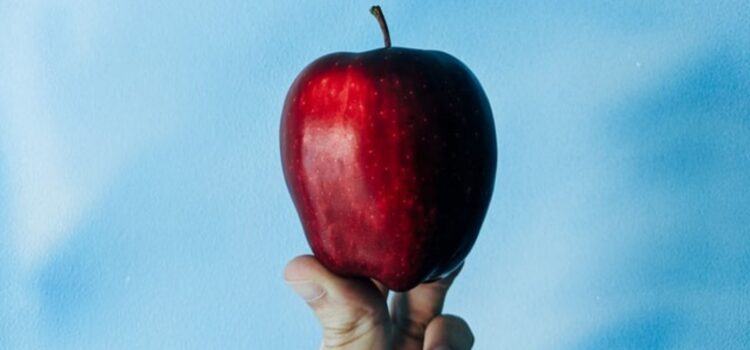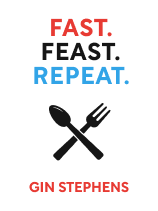

This article is an excerpt from the Shortform book guide to "Fast. Feast. Repeat." by Gin Stephens. Shortform has the world's best summaries and analyses of books you should be reading.
Like this article? Sign up for a free trial here .
How should you break your fast? What foods should you avoid eating after ending your fast?
When it comes to breaking your fast, don’t be too strict on yourself. As much as possible, opt for unprocessed or minimally processed foods. But since fasting is quite hard psychologically, you should allow yourself some treats every now and then.
Here are some things to keep in mind when breaking your fast.
Feast on Quality Foods Plus Some Treats
Stephens explains that when it’s time to eat, you can eat whichever foods you want. She recommends following her “delay, don’t deny” principle and eating mainly quality foods.
- To delay means to wait until your fast is over and it’s time to eat. Most often, this means waiting until your daily fast ends. However, you might also delay consuming a given food that would hinder your weight loss efforts—such as pizza—until you reach your goal.
- Don’t deny means that there’s no list of banned foods. When it’s time to eat, enjoy what you’d like to—whether it’s a cheeseburger or a salad is up to you.
However, don’t deny does not mean that you can eat as much as you please. If you overeat, you’ll store excess blood glucose as glycogen and fat. If you can’t empty your glycogen stores in each fast, your body won’t be able to access and burn fat as fuel. In this case, you’ll maintain or gain weight.
(Shortform note: In Intuitive Eating, Tribole and Resch recommend that you honor your hunger as a key step to healing your relationship with food. If you deny your hunger, you’ll reinforce the dieting mindset that causes yo-yoing between self-deprivation and bingeing. Instead, give yourself “unconditional permission to eat” and pay attention to your hunger signals to learn when you’ve had enough.)
While Stephens’s approach allows you to eat as you choose, the quality of your food does matter. So while desserts aren’t off-limits, you can’t exclusively eat treats and expect to feel good or lose weight. This is because not all calories are equal: 100 calories of candy is empty of nutrition while 100 calories of vegetables is nutrient-rich.
(Shortform note: While Stephens allows for some ultra-processed foods in her lifestyle, Michael Greger argues in How Not to Die that highly refined foods are never good for us. They’re at the root of numerous modern diseases, and they desensitize your palate so that normal foods don’t taste as good. Given this, it might be easier to go cold turkey from ultra-processed foods rather than trying to eat them in moderation. After all, they’re engineered to encourage overeating, which Stephens acknowledges—so if you keep them in your diet, you might find yourself struggling to eat in moderation.)
Stephens recommends using the NOVA classification system to choose what to eat when breaking your fast:
- Food Type #1: Unprocessed or minimally processed foods—This includes whole foods such as fresh fruits and vegetables, meats, fish, nuts, and dried or crushed foods like nuts.
- Food Type #2: Processed culinary ingredients—This includes foods prepared with traditional processing methods such as milling, grinding, or churning. Flours, sugars, butters, and salts fall in this category.
- Food Type #3: Processed foods—These foods result from the combination of unprocessed foods and processed culinary ingredients, and they resemble whole foods. Think homemade bread, yogurt, tofu, or pickles.
- Food Type #4: Ultra-Processed foods—This category includes highly processed food-like items made primarily from food-derived ingredients, preservatives, flavors, and other chemical compounds. Think Cheetos, chicken nuggets, ice cream, grocery store bread, or Twinkies-style snack foods.
Stephens explains that ultra-processed foods contribute to overeating and obesity, and she recommends eating them infrequently, if at all. Instead, eat mainly foods from the first three categories, shop in the produce and deli sections of the grocery store, and avoid eating things that your great-great-grandparents wouldn’t recognize as food.
(Shortform note: In Fast Food Nation, Eric Schlosser explains that in addition to their contribution to obesity and food addiction, the ultra-processed foods created by fast food companies and agribusiness have decimated independent farmers and exploited workers for decades. Farmers receive a pittance for the food they produce, while laborers in fast food chains and slaughterhouses withstand poor working conditions and an aggressively anti-union environment. To overcome this, Schlosser suggests that the federal government needs to pass antitrust laws and put the power back with the people.)

———End of Preview———
Like what you just read? Read the rest of the world's best book summary and analysis of Gin Stephens's "Fast. Feast. Repeat." at Shortform .
Here's what you'll find in our full Fast. Feast. Repeat. summary :
- How intermittent fasting can help you lose weight, feel better, fight disease, and live longer
- An explanation of the cutting-edge science that supports fasting
- How to follow a four-week quickstart program to adapt to this new lifestyle






